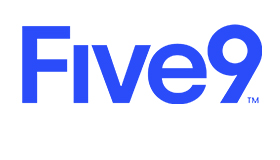Interest in usage-based pricing has increased over the past year. After all, it seems so easy – pay only for what’s used. And while it might be easy, it isn’t necessarily cheaper.
Like with most things, there is a time and place for it. Five9 offers customers both usage-based pricing, sometimes referred to as “per-minute pricing,” as well as concurrent and seat-based licensing.
The Case for Usage-Based Pricing
The vast majority of contact centres use agents in defined shifts – anywhere from single-shift eight–hour days up to full 24/7 operations.
Some contact centres in specific industries may have seasonal “bursty” traffic – think retail, Black Friday, Mother’s Day, Valentine’s Day or financial institutions around tax season.
For these companies, they may consider implementing usage-based pricing to cover those periods of increased demand if their traditional unlimited license structure can’t expand for those months or if they want to optimize their cost profile.
Another use case for smaller organizations are employees who spend some time on customer communications but the majority of their time doing other work.
For startups and quickly growing businesses, employees are sometimes part of ad hoc contact centres. While these can be short lived in the evolution of the business, it can be an environment where usage-based pricing makes sense.
Probably the most basic case for usage-based pricing is for part-time agents. For contact centres running on a named license contract, someone only working a few hours a day might make that license cost more expensive, so having the flexibility to only pay for what you need can be beneficial.
Of course, another way to do this is to not have named licenses but instead have a shared model where a license can be shared in a one–to–multiple ratio. This option is usually called “concurrent seat licensing” and allows multiple human agents to use a single application license during a 24–hour period.
Finally, there is a separate category for BPOs who find usage-based pricing the best way to split billing between their different clients. Traditional unlimited licensing is a “Solomon-like” calculation of dividing an agent’s time by license cost between multiple client callers.
The Case for Unlimited-Use Pricing
For the vast majority of contact centres running a relatively stable workforce at a typical agent occupancy rate, unlimited pricing will always be the most cost effective.
As mentioned, this is especially true of contact centres using a concurrent license model – whereby a single license can be used by multiple agents/shifts. In a two- or three- shift operation, an unlimited use, concurrent license will be exponentially cheaper than usage-based pricing.
A Usage-Based Pricing Calculator allows you to do a rough calculation of your own contact centre use and what usage-based pricing would look like.
Simply enter into the boxes the percentage of time an average agent spends on voice and digital channels and the number of agents in your contact centre.
For voice transactions, the calculator will estimate the actual talk-time minutes based on an 8-hour shift with subtractions for lunch/breaks, call wrap-up time and idle time. Digital usage estimates the sending and receiving of 5 messages per minute (perhaps across multiple simultaneous transactions).
From that baseline, you can see the estimated daily, weekly, monthly and annual costs. If you work double or a full three shifts, simply multiply the estimates.
For instance, using an example where a full-time agent spends 80% of their productive time on voice calls and 20% on digital channels, you can see that usage-based pricing is potentially double the cost of an unlimited license for the same capabilities.
However, if that person is a “casual” agent working 2 hours per day on contact centre work, usage-based pricing would be approximately half that of an unlimited named license.
The same is true for seasonal workers. Two or three months of work would be much cheaper under a usage-based pricing model if the contact centre application vendor’s licensing didn’t allow for seasonal expansion licenses billed monthly.
Flexibility, scalability, and cost-containment are essential to well-run contact centres.
This blog post has been re-published by kind permission of Five9 – View the Original Article
For more information about Five9 - visit the Five9 Website
Call Centre Helper is not responsible for the content of these guest blog posts. The opinions expressed in this article are those of the author, and do not necessarily reflect those of Call Centre Helper.
Author: Five9
Published On: 5th Jul 2021 - Last modified: 6th Jul 2021
Read more about - Guest Blogs, Five9






 Five9 empowers organizations to create hyper-personalized and effortless AI-driven customer experiences that deliver better business outcomes. Powered by Five9 Genius AI and our people, the Five9 Intelligent CX Platform is trusted by 3,000+ customers and 1,400+ partners globally. The New CX starts here and it's at the heart of every winning experience.
Five9 empowers organizations to create hyper-personalized and effortless AI-driven customer experiences that deliver better business outcomes. Powered by Five9 Genius AI and our people, the Five9 Intelligent CX Platform is trusted by 3,000+ customers and 1,400+ partners globally. The New CX starts here and it's at the heart of every winning experience. 






























